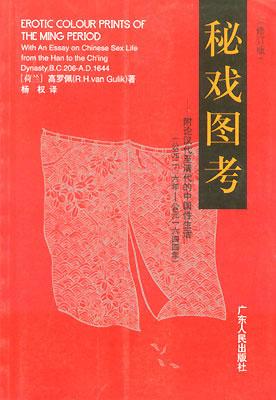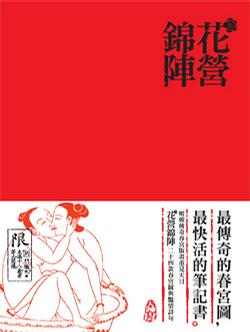-

Siddham, An Essay on the History of Sanskrit Studies in China and Japan
"The survey presented here, brief though it be, will yet suffice to support the author’s main argument; viz. that while the study of the Sanskrit language never flourished in either China of Japan, the Indian script—in a variety of Brahmi called Siddham—played an important role in Far Eastern Buddhism ever since the introduction of this script into China in the 8 century A.D. "The Siddham script owed its popularity in China and Japan especially to the rise of the Mantrayana, the esoteric School of the True Word. It was used in particular for writing Dharani and mantra, and for the magic syllables known as Bijaksara or "germ-letters". Since the latter figure largely in the Vajra-dhatu and the Garbha-dhatu, the two magic charts that contain the essence of the teachings of the Mantrayana, these two Mandala are described here in some detail. Although those data are readily available in China and Japan, it is hoped that the description of these two Mandala given in the present study will be of some interest to Buddhologists and archaeologists. "The attention of the readers in general is drawn to the calligraphic development of the Siddham script in China and Japan; this calligraphic aspect of Sanskrit studies in those two countries is described at some length in this essay and illustrated in the Plates of Volume II. Orientalists are generally agreed that there exist only three living scripts in the world of such intrinsic artistic value as to deserve a place in the realm of fine art, and which are indeed considered on a par with painting in those countries where those scripts are in use." -

秘戏图考
本书包括相对独立的三卷:英文卷、中文卷、画册。 卷一系英文,分为三篇。上篇提供一个中国色情文献的历史概览。中篇包括一个简明的中国春宫画史概要,以及一个稍为详细的明末春宫版画述说。下篇是对翻印于卷三的画册《花营锦阵》中的题跋的注释性翻译。 卷二全部是中文资料。在这卷中,汉学家们可以看到卷一中提到的大多数中文著作的全文。 最后的卷三是春宫画册《花营锦阵》的翻印本,是用我收藏的那套古印版印刷的。 -

花營錦陣
最傳奇的春宮圖,最快活的筆記書 明朝傳奇春宮版畫重見天日,《花營錦陣》24款春宮圖與豔情詩句。 春宮圖是指以男女交歡為題的繪畫,又名秘戲圖、春宮畫,在日本則稱為「春畫」。明代畫家仇英、唐伯虎皆為春宮畫名家,當時坊間流行以唐伯虎等畫家的春宮圖為藍本的各種臨摹本,其中以《花營錦陣》最為知名。 《花營錦陣》為晚明木刻版畫,全套共二十四圖。圖版所描繪的情境質樸生動,各種交歡姿勢與場景各有其趣,包括了傳教士體位、六九式、肛交、口交、打野炮,甚至搭配各類輔助道具等等,可看出老祖先們在性愛上早已變化多端、創意十足;每圖搭配的豔情詩更是一絕,風格混合了文學語言和通俗口語,例如:「座上香盈果滿車,誰家少年潤無瑕。為探薔薇顏色媚,賺來試折後庭花。半似含羞半推託,不比尋常浪風月。回頭低喚快些兒,叮嚀休與他人說。」此文將口交用這樣典雅含蓄的詩詞描述出來,讀來詼諧幽默,趣味橫生,更充分顯露當時浪漫的性文化及社會風貌。 -

Sexual Life in Ancient China
In 1961 Robert van Gulik published his pioneering overview of Sexual Life in Ancient China. This edition of the work is preceded by an elaborate introduction by Paul Rakita Goldin assessing the value of Van Gulik’s volume, the subject itself, and its author. The introduction is followed by an extensive and up-to-date bibliography on the subject, which guides the modern reader in the literature on the field which appeared after the publication of Van Gulik's volume. One of the criticisms in 1961 regarded the Latin translations of passages deemed too explicit by Van Gulik. In this 2002 edition all Latin has for the first time been translated into unambiguous English, thus making the full text widely available to an academic audience. -

琴道
精装,毛边两种。 -

大唐狄公案Ⅱ
全书以中国唐代宰相狄仁杰为主人公,描述狄公在州、县及京都为官断案,为民除害的传奇经历。全书故事纷纭,案情凶险,情节扣人心弦, 谜底逼人追索。 狄公从京师返回汉源,避雨投宿朝云观,一夜间多起奸淫杀人案发生。嗣后,狄公从汉源一宅院池塘夜间蛙声四起中发现蹊跷,又是一起盗金杀人案。 狄公调迁浦阳县令,任内破获了半月街奸杀案、普慈寺淫僧案和涉及九命奇冤的铜钟案,其间,自己及亲随竟被盖在铜钟之下…. 端午浦阳举办龙舟赛,鼓手遇害,谋杀一个接着一个,狄公设计查出元凶,且寻回了失窃多年的皇家御珠,国宝被盗案至此水落石出。